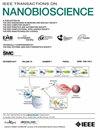基于通信网络的递归贝叶斯更新实时检测心肌梗死发作。
IF 4.4
4区 生物学
Q1 BIOCHEMICAL RESEARCH METHODS
引用次数: 0
摘要
心肌梗死(MI)是导致死亡的主要心血管疾病之一。早期发现是改善患者预后和降低心肌梗死死亡率的方法之一。这需要访问个人实时至关重要的心脏检测心肌梗死的发病迹象。然而,大多数已知的重要心脏体征和生物标志物MI并不总是存在于心肌梗死发作或不独特MI。因此,有必要开发一个框架,可以唯一确定的MI。这项工作提出了一个框架,用于早期检测心肌梗死发病的利用的MI生物传感能力Graphene-field效应晶体管(G-FET),通信网络的远程心脏重要指标传输能力,以及基于个体变化情况的递归贝叶斯更新的实时自适应潜力。与贝叶斯更新相关的后验概率,随着实时接收到新数据而动态修改,表明MI开始。这确保了心肌梗死的早期检测。考虑到心肌梗死发病检测窗口为30至60分钟,这是确保心肌梗死效应可抢救的关键时间,因此提供了数值结果。数值结果表明,所提出的框架提供了心肌梗死发病的早期检测,对挽救其影响和降低死亡率至关重要。分析了部分设计参数对系统性能的影响。本文章由计算机程序翻译,如有差异,请以英文原文为准。
Real-Time Detection of Myocardial Infarction Onset Using Communication Network-Enabled Recursive Bayesian Updating
Myocardial infarction (MI) is one of the leading cardiovascular pathologies that often result in mortality. One of the methods to improve patient outcomes and lower mortality in MI occurrence is early detection. This requires access to individuals’ real-time vital cardiac signs to detect the onset of MI. However, most known vital cardiac signs and biomarkers of MI are either not always present in MI episodes or are not unique to MI. Hence, there is a need to develop a framework that can uniquely determine the onset of MI. This work proposes a framework for early detection of the MI onset that leverages the MI biomarker sensing capability of the Graphene-field effect transistor (G-FET), the remote vital cardiac indicators transmission ability of a communication network, and the real-time adaptive potential of recursive Bayesian updating based on an individual’s changing condition. The resultant posterior probability associated with the Bayesian updating, which is dynamically modified as new data is received in real-time, indicates the MI onset. This ensures early detection of MI. Considering an MI onset detection window of 30 to 60 minutes as a critical time to ensure that MI effects are salvageable, numerical results are provided. The numerical results demonstrate that the proposed framework provides early detection of MI onset, crucial to salvaging its effects and lowering mortality. The influence of some of the design parameters on the system performance is also evaluated.
求助全文
通过发布文献求助,成功后即可免费获取论文全文。
去求助
来源期刊

IEEE Transactions on NanoBioscience
工程技术-纳米科技
CiteScore
7.00
自引率
5.10%
发文量
197
审稿时长
>12 weeks
期刊介绍:
The IEEE Transactions on NanoBioscience reports on original, innovative and interdisciplinary work on all aspects of molecular systems, cellular systems, and tissues (including molecular electronics). Topics covered in the journal focus on a broad spectrum of aspects, both on foundations and on applications. Specifically, methods and techniques, experimental aspects, design and implementation, instrumentation and laboratory equipment, clinical aspects, hardware and software data acquisition and analysis and computer based modelling are covered (based on traditional or high performance computing - parallel computers or computer networks).
 求助内容:
求助内容: 应助结果提醒方式:
应助结果提醒方式:


